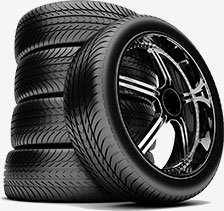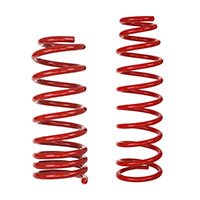What is the valve body in an automatic transmission?
What is the valve body in an automatic transmission?
What is the valve body in an automatic transmission?
Indeed the valve body is one of the pieces of component that allows an automatic transmission to function properly. It channels hydraulic fluid through a series of paths, this valve body is able to trigger the correct clutch pack for the selected gearing.
However, there are various number of valves inside the valve body. But each of which is referred to by the shift that it’s responsible for. Let’s take an example, the third-fourth valve activates the upshift from third to fourth gear, while the fourth-third determines when to downshift from the fourth to the third gear. This is because the valve body is responsible for determining when to be in drive or reverse as well.
However, it is connected to the shifter in the vehicle. Note that the valve that’s connected to the shifter is called the manual valve. This is because since it’s the one valve that takes input from the driver.
So How Does An Automatic Transmission Work?
Truly, the gearbox is a complicated system of gears and shafts which can confuse even the most mechanically inclined persons. Even at that, an automatic transmission system happens to be a different level of black magic engineering. There is a reason for this, it’s simply because of the use of planetary gears and clutch packs.
These planetary gears are interesting because they have two inputs and one output. However, this gave engineers plenty of leverage when it came to building a flexible system and reaching various performance levels. But an average automatic gearbox is packed with several planetary gear sets and a bunch of clutch packs. This requires a complex solution.
The Automatic Transmission Valve Body
This complex solution required came in the form of numerous hydraulic valves and solenoids that drive the gears as needed. This helped in actuating different gears and clutch packs that are done using hydraulics. The average automatic transmission gearbox is highly pressurized which relies on transmission oil pressure to work correctly. And at the end of the day, the solution came in the form of a valve body.
This means that an automatic transmission valve body consists of a large number of hydraulic channels and passageways developed to bring highly pressurized oil to various valves. But each of those channels performs more or less the same task as a hydraulic fluid hose. So instead of having hundreds of horses running all over the place, it became much simpler to mill out passageways in a metal block. This made everything to be tidied as well as more reliable.
However, more modern systems have ditched this mechanical link for a solenoid pack that does the same job. http://ctimoauto.com/product/motorcraft-mercon-v-automatic-transmission-fluid/
http://ctimoauto.com/product/motorcraft-mercon-v-automatic-transmission-fluid/
THE TYPES OF VALVE IN AUTOMATIC TRANSMISSION
A valve body is really just a housing component and selector for different valves that are able to control the gearing of a vehicle. This is because every valve body and transmission is different. But these are just the primary types of valves that you’re likely to find inside of the valve body.
- The Shift Valves And these are a simple balance-type spool valves that operate the servos, bands, and the gear sets of your engine.
Importantly, shift valves are the reason an automatic engine is able to have various gears at all. And it is vital for these valves to be sensitive because they need to be able to respond to the engine load. Not just that, including the engine speed, and gearshift position.
- The Shuttle Valve
This shuttle valve exists just to allow fluid to flow through it. And inside the valve is a block of some kind (it’s usually a ball). However, what makes a shuttle valve different from an empty pathway is that it allows fluid from two different sources to enter and pushes fluid to a third point. But considering this whole system relying on hydraulic pressure, this shuttle valve is fairly important.
The Manual Valve
Here is another valve that is controlled by the driver which allows the engine to be placed into park, reverse, drive, or neutral.
- The Pressure Reg Valve
Here comes another one which is usually two, a primary and secondary regulatory valve. However, the first determines the amount of oil coming from the transmission pump. While the second regulates the oil going to the torque converter.
- The Kickdown Valve
Note that this is essentially an override valve. This means that if the kick-down valve detects that acceleration is occurring quickly, the transmission will shift into a lower gear. Sometimes the kick-down valve is able to ignore shift control pressure.
- The Throttle Valve
Here is another valve that responds to pressure from the gas pedal. Although this isn’t a precise way for the driver to control the valve body. But it’s still a valve that the driver has some control over.
- The Governor Valve
However, the process is largely the same. This governor valve senses the speed of the output shaft and uses that indicator to help control gear shifts. But the pressure coming from the governor increases with vehicle speed.
- The Vacuum Modulator Valve
The Vacuum Modulator Valve is a diaphragm device that works to read the engine load on the shift valve. And as the load rises and falls, the diaphragm expands and contracts, which helps in changing the throttle control pressure.

Conclusion on what is valve body in automatic transmission
Note that proper maintenance is definitely one way to keep your valve body and gearbox in the green for long. But we do recommend that you use quality transmission oil. This is because using low-quality oils will lead to sub-par lubrication and cooling of the entire system. And this will translate to a shorter life span of key components.




















